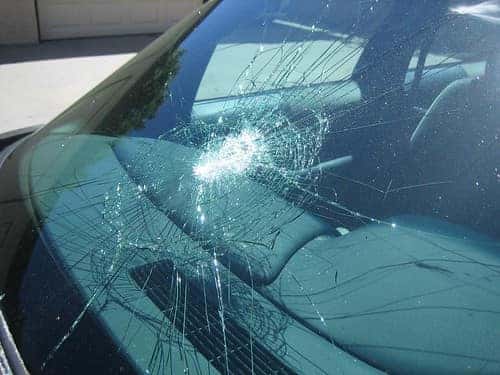What to Do When Your Windshield is Damaged?
It is absolutely necessary that you seek windshield replacement services, especially if the damage extends to more than 15 inches across no matter if it's located in the driver's line of sight or not.
If there are any cracks on your windshield, make sure they do not extend more than 15 inches across before getting them replaced. Cracks that are too long allow moisture to seep through and cause further damage to your car by rusting out its frame and compromising its structural integrity. The stress created from driving with a damaged windshield may also cause it to shatter completely which can seriously injure any passengers or other motorists on the road at that time as well as yourself as the driver.
Choose from one of several different types of windshields when choosing your replacement piece:
Standard laminated glass is exactly what it sounds like - a piece of tempered glass with two or more layers of adhesive plastic that bolts into place behind a metal "U" channel assembly. It is highly recommended that drivers select this type for their vehicle if they intend to drive it while waiting for their window to be replaced (a process that takes about 30 minutes). Many insurance companies cover standard glass at no additional cost during repairs.
High-performance laminated glass is often recommended for high-end vehicles because it offers increased shock resistance. However, the benefits come with a price - that of an increased replacement cost.
Polycarbonate plastic windshields are very similar to standard laminate glass in appearance except that they're much lighter and more durable than their counterparts. They also cost more than their counterparts but can be used instead of them if you live in warmer climates where rides tend to be stuck inside the car for long periods of time (e.g., road trips or everyday commute). These pieces are 15 times stronger than regular laminated glass so accidents won't leave your windshield looking like Swiss cheese anymore! And best of all, many insurance companies will cover this type of windshield at no cost to their customers.
Composite glass is another type of durable plastic windshield that can be installed as an optional upgrade for cars driving in warmer climates or those who intend to spend a great deal of time inside their vehicle. Like polycarbonate, it's 15 times stronger than regular laminated glass and just as upfront cost-friendly as its counterpart. But unlike its counterpart, composite glass has the added benefit of being virtually invisible from the outside - a boon for those worrying about aesthetics! Just don't drive with this piece in high wind or heavy rainstorms because it may not stand up well against strong weather conditions.
Reinforced laminated glass is exactly as it sounds a standard windshield with metal rods added to reinforce it against strong impacts. Those living in states with high exposure to road debris (e.g., California or Florida) may find this piece a worthwhile investment because of its increased durability and safety benefits - but keep in mind that not all insurance policies cover this type of glass replacement!
What to Do After a Windshield Replacement?
Once you've procured yourself a new windshield, the last thing you need to do is properly care for it. Make sure you clean your windshield every time after using the wipers by gently wiping from the bottom up with a soft cloth using distilled water and clear ammonia mixed 50/50. Avoid using commercial window cleaners as they often leave behind hidden residue to which dirt will attach itself over time.
If you want to avoid having to go through the ordeal of replacing your windshield again, consider investing in a sunshade or cover. Not only will it protect your car from dings and scratches during long stints of parking on the streets, but it'll also act as an insulating barrier against heat buildup. Keeping your car's interior cool is important because it reduces the chance of cracks forming in your window over time!
If you have a chip that has not penetrated into your window too deeply or if you've successfully sealed it with a glazing compound, follow these steps:
· Sand down the area surrounding the chip so that its edges are smooth and even.
· Mix glazing compound according to package instructions and fill the chip with the mixture.
· Allow it to dry overnight, then sand down any bumps or ridges left behind by the glazing compound the next day.
For cracked windshields: if you can't afford a brand new piece for your car, consider using a plastic welder at home! Simply cut out two pieces of acrylic plastic (anything transparent will do) and lay them over both sides of your windshield so that they overlap in the middle. Peel away their backings and press them against your window until they adhere firmly together. Then, use a heat gun from an art or craft store to slightly warm up the edges of each piece before pressing them together to form an airtight seal. Spray paint both of your pieces so that it matches the rest of your vehicle's exterior and voila! You've just saved yourself lots of money by doing a simple repair job at home.
Port Orange, FL

